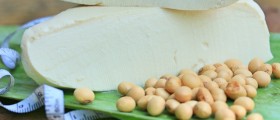
Menstrual pain or medically ‘primary dysmenorrhea’ affects women of all ages, especially teenagers, and it is usually not a cause of worry, except when it can indicate conditions such as endometriosis or uterine fibroids (these are the cases of secondary dysmenorrhea). When a woman starts to ovulate regularly, she can experience primary dysmenorrhea, and she usually feels the pain for one or two days before the period. With age the pain subsides, as well as if a woman gives birth.
Typical symptoms include headache, nausea, constipation, sometimes vomiting, cramping, pain spreading to lower back and legs, frequent urination and heavy menstrual flow. Prostaglandins, hormone-like substances, trigger the contractions of the uterus resulting in primary dysmenorrhea. Conditions such as endometriosis, uterine fibroids or ovarian cysts, infections, PID (pelvic inflammatory disease), IUD contraceptive (intrauterine device) and blood and tissue discharge through cervix are the causes of secondary dysmenorrhea, and here the doctor will perform internal examination and run a series of tests, including blood, urine and Pap smear test to look for underlying causes of dysmenorrhea.
Treatment starts with pain relief, and NSAIDs (Nonsteroidal anti-inflammatory drugs) including ibuprofen, aspirin and naproxen are commonly used. Contraceptives may also be proscribed to alleviate the pain, while the pain associated with PID is treated with antibiotics. Food therapy, meditation and relaxation exercise, like tai chi and yoga also help reduce the pain. The diet should include calcium rich food like spinach and kale, beans and almond, as well as, for example, cherries, blueberries, tomatoes, bell pepper because fruits and vegetables increase the antioxidant intake. Olive oil as well as soy should be included in the diet; soy cheese, cold-water fish and lean meats, should substitute red meat. Alcohol, caffeine and tobacco only aggravate the symptoms, and from the same reasons refined and processed food like pastas, sugar, white bread, cookies, crackers, French fries, margarine and donuts should also be avoided. The recommended daily intake of water is 6-8 glasses, while exercising for 30 minutes a day, 5 days a week greatly reduces the pain.
Omega-3 fatty acids, calcium, magnesium, vitamins D and E are the supplements used to reduce inflammation and abdominal cramping, and they should be taken with doctor’s supervision to avoid the possible side-effects. Herb extracts in the forms of pills, capsules, tablets and tinctures are the choice of some women as well, and chaste berry, cramp bark, black cohosh, evening primrose and turmeric are traditional remedies for menstrual pain. Homeopathic treatment for menstrual pain will include some of the following remedies: Belladonna, Chamomilla, Lachesis, Magnesia phos, Nux vomica or Pulsatilla. Acupuncture and acupressure have also been used to reduce menstrual pain, while chiropractic offers pain relief by way of spinal manipulation.















-Why-Some-Women-Take-This-Type-Of-Progesterone-During-Early-Pregnancy_f_280x120.jpg)

Your thoughts on this
Loading...